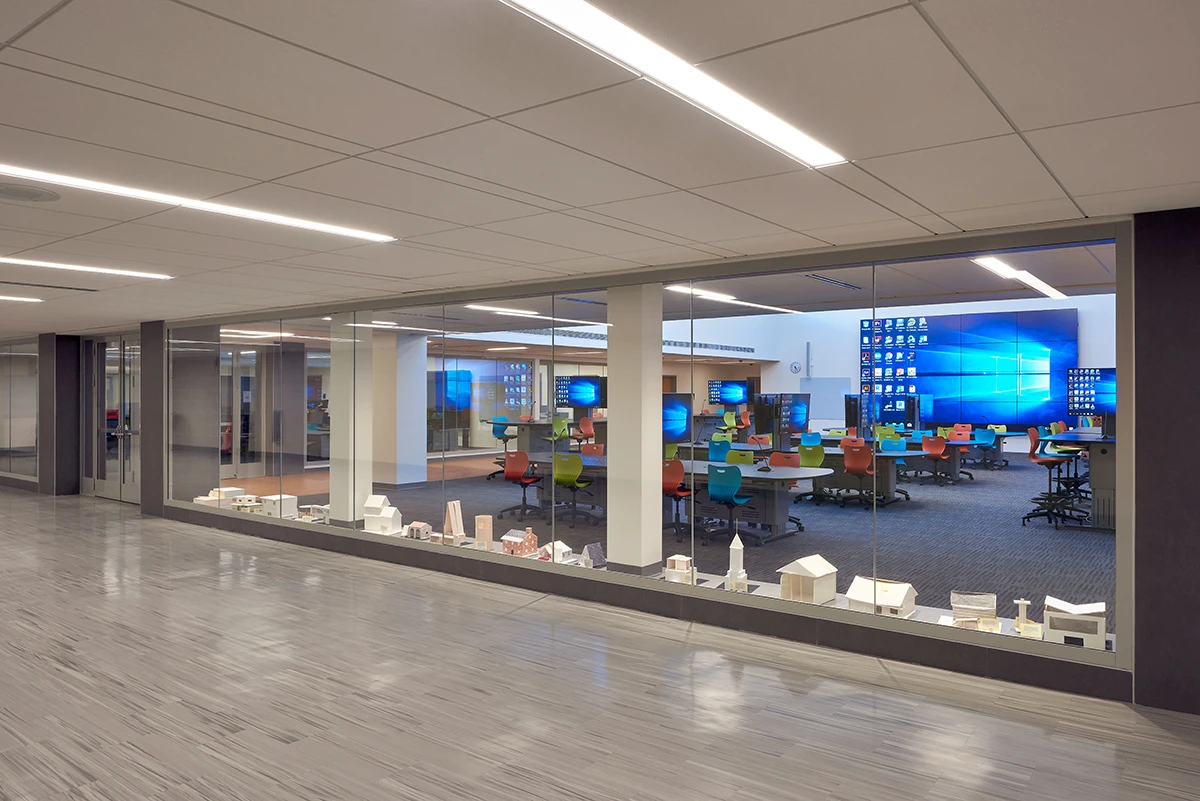Codes, Standards and Guidelines: Navigating Safer School Design Resources
Devin Bowman, General Manager, Technical Glass Products

Designing safer schools involves planning for multiple contingencies. While fire safety has been a part of local building codes since Boston officials first prohibited wooden chimneys and thatched roofs in 1631, both local and model codes have gone through extensive updates since then to include more aspects of the built environment.
These updates have standardized minimums for corridor and opening dimensions, accessibility considerations and material selection. Along with these updates, entities other than official coding bodies have developed standards and guidelines to support project teams in meeting code requirements and achieving best-practice security recommendations.
The confluence of best-practice guidelines from the Partner Alliance for Safer Schools (PASS), standards for system and material testing, accessibility requirements, building codes and more can make school building design difficult.
Knowing what factors to consider in the design of a school building and which architectural elements are required can help project teams navigate the complexities of safer school design.
The difference between codes, standards and guidelines
As with most things code-related, compliance and violation can come down to the ability to distinguish the differences between similar-sounding terms, like fire-protective and fire-resistive. While this is particularly important for code requirements, it also is crucial when determining the order of priorities while designing safer schools. Code requirements, standards and best-practice guidelines can seem difficult to parse in terms of how they contribute to project goals and certificates of occupancy. The International Code Council (ICC) even has a graphic to help specifiers distinguish these three. However, this graphic only cites that they are different; it does not explain how they differ.
Guidelines from PASS, resources from the International Code Council (ICC), recommendations from governmental reports and other similar documents provide evidence-based considerations for designing safer schools. It is important to note that while these guidelines may better design, they are not requirements for occupancy. They also do not supersede building codes.
Standards differ in that they provide directions on creating accurate and repeatable testing parameters. These parameters help to categorize both material and system performance capabilities. While standards certify when a product meets thresholds to be considered code-compliant for use in specific applications, they also can be a measurement for best-practice recommendations that have yet to be included in model or local building codes.
Finally, building codes establish minimum requirements for protecting public health, safety and general welfare through construction. These minimums include requirements for accessibility, fire-rated design, egress and more. Adhering to local building codes is necessary for a project to receive a certificate of occupancy.
It is important to note that just as standards offer a framework for determining if a system or material meets best-practice recommendations or code requirements (or both), codes often rely on data from projects that implement best practices to inform updates to subsequent editions.
What are the design requirements for fire safety?
Designing safer schools encompasses both enhancing security and meeting code-driven requirements for fire and life safety. Given there are over 3,000 fires on school campuses annually, fire-rated design is crucial. Although specific requirements can vary significantly between locations and projects, understanding general components of fire and life safety can help guide teams in determining code-compliant design strategies.
First, school building designs must include at least one means egress system, which is a continuous, unobstructed path from any occupied portion inside a building to a public way. A means of egress system includes the exit access, the exit and the exit discharge. All three aspects must meet requirements listed in local codes. This includes the use of fire-rated materials and systems, adequate dimensions to facilitate egress and other standards for accessibility and ease of use.
If a school includes a space that exceeds a maximum square footage, project teams may need to redesign the area with fire barriers. This is known as compartmentation and helps inhibit the spread of smoke and fire from one area to another. While school building design can incorporate many compartmentation strategies, expansive sections of fire-rated glazing, such as fire-rated glass curtain walls or butt-glazed assemblies, can help teams meet code requirements without sacrificing open sightlines. For example, the design team behind Middletown High School used butt-glazed, fire-rated assemblies to create fire barriers while allowing a significant amount of visual connection between spaces.
In addition to means of egress and fire barriers, there may be other areas of a school that require fire-rated materials. For instance, load-bearing walls will often need all systems in them, including doors and windows, to have a fire rating. Because the exact requirements for these and other elements of fire-rated design vary between projects, design professionals are encouraged to consult local codes and clarify requirements with an Authority Having Jurisdiction (AHJ).
Going beyond the baseline when designing safer schools
Achieving code requirements is necessary to obtain a certificate of occupancy, which often makes it the first priority in school building design. That said, meeting best-practice recommendations for enhanced security is an increasingly common demand for education projects. While codes do no yet mandate security measures, school districts may wish to go beyond fire safety and included enhancing security as an investment in better protecting students and faculty.
Doing so can help bolster baseline safety while also planning for the futures, should updates based on best-practice recommendations be mandated. Given school buildings are a long-term investment, with useful ages extending beyond 49 years, working with resources like PASS or those put out through the ICC can help design teams prepare for future renovations while meeting today’s requirements.
Whether the goal is to ease potential renovation requirements or to lay the groundwork for enhancing school security overtime, multifunctional, fire-rated glazing assemblies can be instrumental to designing safer schools. By combining components that are known to be compatible, these systems are able to meet the standards for both fire and life safety and current recommendations for improving building security.
To support their school building designs, project teams can request more information or schedule a presentation with an expert from Technical Glass Products to learn more.


